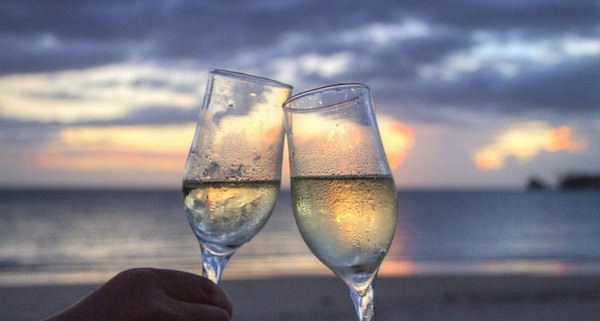Don’t Lose Your Sparkle: Tips for Selling Sparkling Wine By-the Glass
As wine drinkers become more likely to order wine by-the-glass with dinner than purchase a bottle, it’s important for restaurants to offer a stellar selection of glass pour options. One category of wine that poses problems for by-the-glass consumption is sparkling wine. This is a shame, because sparkling wine is a growing option for wine drinkers, with growth of 4% in the U.S. and U.K. in 2014. With this demand in mind, it makes sense for restaurant operators to add a sparkling wine to their glass list. But what makes bubbly so attractive is, well, the bubbles. So how should you store an bottle of sparkling wine once it’s been opened? You can’t lose that sparkle and still serve it to guests, so here are some tips on storing and serving sparkling wine by-the-glass.
Proper Sparkling Wine Storage
The most important tool for storing prosecco, cava, or champagne is to cap the the bottles with a proper wine stopper made for sparkling. This seems like an obvious suggestion, but it’s your first line of defense from flat wine. Make sure the bottle stopper locks onto the bottle top by clipping on below the lip to help curb CO2 loss. This a practice that must be enforced and followed by all restaurant staff. Properly stored bubbly with champagne stoppers can add an extra day to its shelf life.
Store Sparkling Wine at the Right Temperature
Make sure you’re utilizing coolers specifically made for wine. Temperatures in a wine cooler should not exceed 55°. Wine coolers should be kept out of direct light and cooler lights should always be turned off during non-service hours.
Cocktails that Sparkle
A great way to utilize opened bottles of sparkling wine is to use them in cocktails. There are plenty of classic cocktails aside from the mimosa that utilize sparkling wine as key component. And there are endless options if you create your own house cocktail list. If you’re looking to offer sparkling wine by-the-glass, you should also offer a cocktail that uses that same sparkling wine in it. Classic drinks like a French 75 are a perfect place to start. Using sparkling wines in cocktails allows you to go through bottles at a faster rate because you have more selling channels for the wine. Sparkling cocktails are also a great addition to a cocktail menu in their own right, offering a refreshing and light option that is perfect for summertime and al fresco consumption. Younger drinkers are becoming more and more interested in sparkling wine, as well as cocktails, so pairing the two is a drink made in heaven for millennial drinkers.
Cooking with Wine
Many restaurants will use wine that is no longer fit to serve to the kitchen. This is a great practice to avoid being wasteful and to help your bottom line. Your chef can make great use out of sparkling wine (as long as it hasn’t been opened more than a week) in sauces and marinades. This can be a great way to make use of sparkling wine that has gone flat.
Popular Types of Sparkling Wine
The most legendary sparkling wine on the market is Champagne. This French wine from the Champagne region is often seen as a decadent way to celebrate milestones and major achievements, or to simply celebrate that you’ve gotten out of bed today. But there are many high quality alternative wines that restaurants can offer.
Cava – Sparkling wine from Spain, produced predominantly in Catalonia in the Penedès region. Cava must be produced by a carbonation method that adds carbonation through secondary fermentation in the bottle.
Prosecco – The darling of mimosas. Prosecco, like Champagne, must be made in a designated area determined by law. Prosecco is made in the mountainous Veneto region of Italy.
Sparkling Rosé – Rosé was the biggest wine trend of 2015. The light red wine fits into a new American drinking preference, that for some, is shifting from sweet to dry, more subtle wines. Rosé gets its eponymous color from light skin contact between the grapes and juice during production. The skin lends a bright, fruity quality to many rosés.
Still Rosé – Though this is an article about sparkling wines, rosés can also be made still or semi-sparkling. A still rosé is a great way to add variety to your by-the-glass list while also avoiding the hazards of storing sparkling wine. The upward trend of rosé consumption applied to both the sparkling and still varietals.
Sparkling Wine to Watch for: Lambrusco – Another Italian sparkling wine that was very popular a few decades ago is Lambrusco. While Lambrusco’s popularity was found in its sweet styles, look for Lambrusco to make a comeback in it’s drier, brut form.
Sparkling Wines – There are many more sparkling wines on the market than the ones listed above. From Cremante to generic Spumante. But the ones listed above have the premium advantage of name recognition, denomination approval, and regulated production methods that lend a promise of quality to drinkers.
- 5 Fall Cocktails to Capture the Flavors of Autumn - September 26, 2018
- How Restaurants Can Ignore Sales and Increase Profits - May 9, 2018
- 2018 Spring Wine Trends - April 18, 2018



